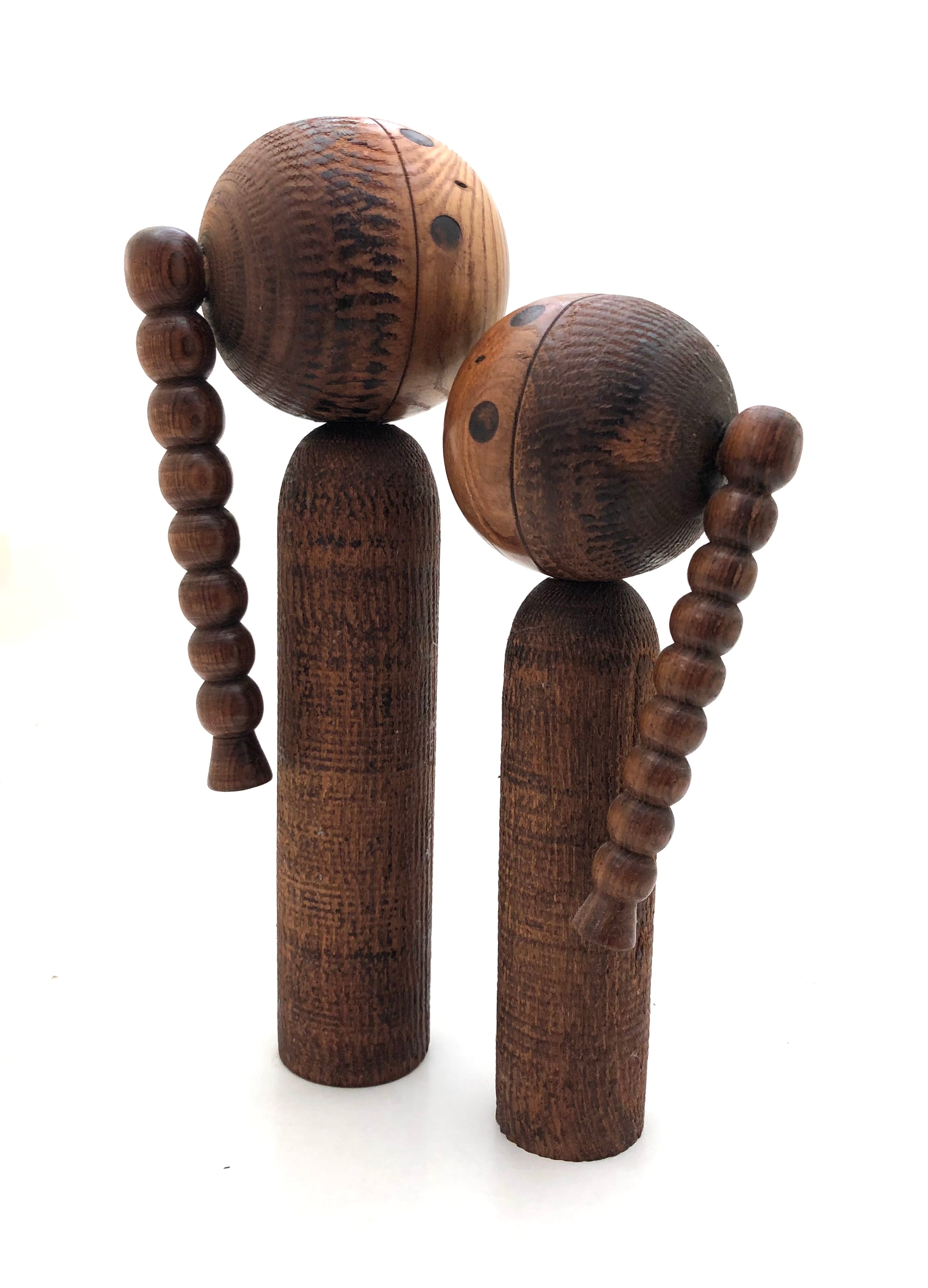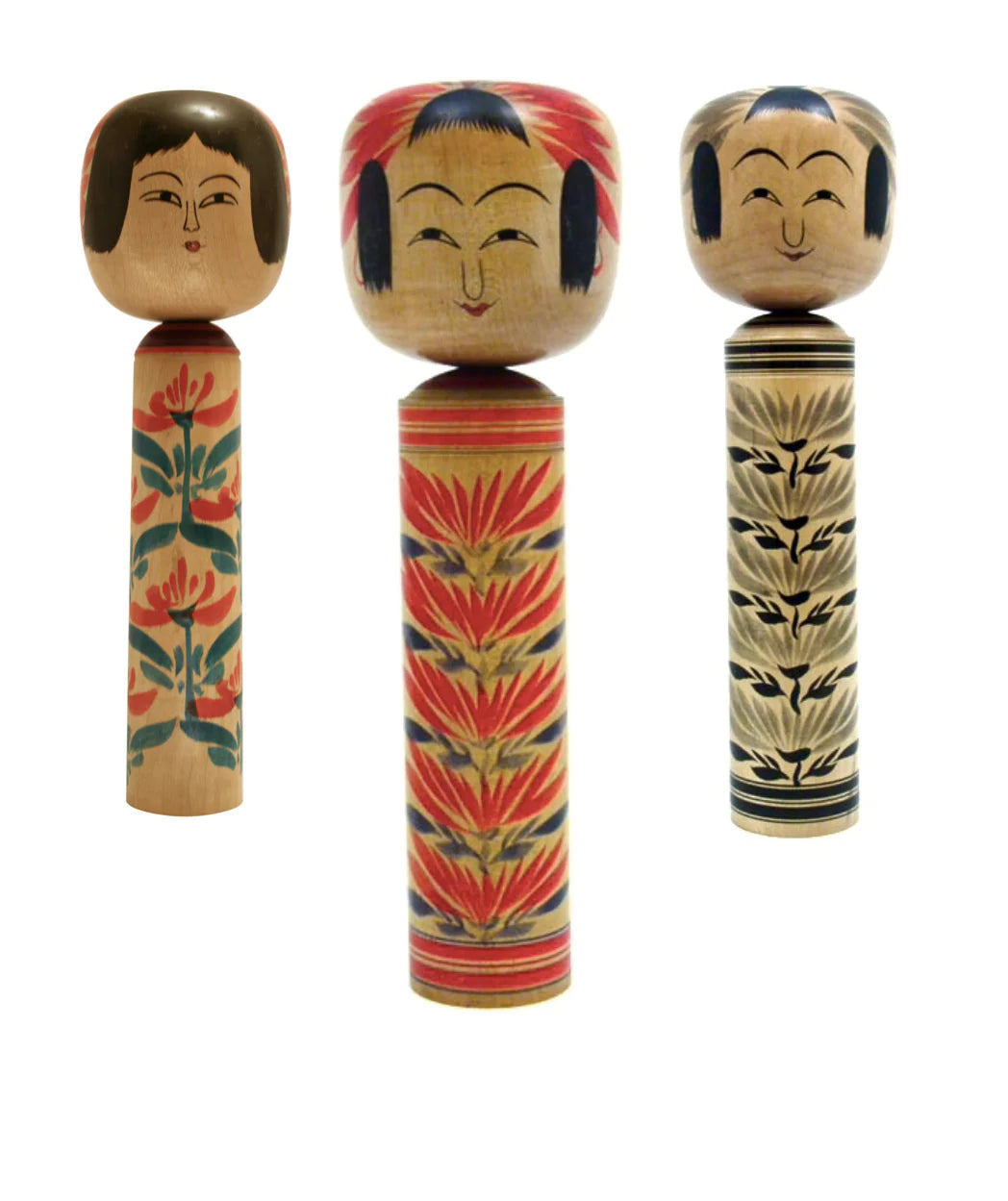


Vintage Japanese Nata-bori Carving of Bodhidharma (Daruma)
Dimensions: 5-3/4”h x 3-1/8”w x 2-3/4”d
This smaller Nata-bori carving has fine details depicting Daruma growing out of one piece of wood having a serine expressing with closed eyes, stylized eyebrows, and a splendid head with detailed carving representing his beard. His hooded cloak, (cowl) is suggested from the natural growth of the tree as it seems tightly wrapped on his back, neck and around his shoulders. This carving is made of a naturally dark and extremely dense root wood with a his flowing robe that seems to be blowing in the wind brought about by the natural configuration of the tree. The irregularities and knots have been left in place, accentuating the rustic mood. All elements carved from and into the Yew wood are admirably done; however the remarkable face of Bodhidharma is the center and the highlight of this work.
In this beautiful carving thoroughly merges with the natural form of a tree root, half hidden by his rustic cloak, is Bodhidharma, the Indian sage who brought Buddhism to Asia. Bodhidharma is also credited as the Patriarch of Buddhism in Japan that came to be known as Zen. The piece is signed, (illegible) in white on the bottom and dated 1.22.49.
Condition: Exceptional condition meaning that the carving has a beautiful patina and the overall figure is more polished than others that we have purchased while retaining the original craft/workmanship. No discoloration, no chipping or cracking, surface wear or structural damage noted. Museum-quality: meeting the highest standards of Japanese Folk art.
Additional Information:
Nata-bori figures are traditionally through a “partial carving” technique, which utilizes wood burls or other chunks of wood with great natural character leaving them in their original shapes. Since there are excellent woods among Japan’s natural resources, woodcarving as a Buddhist art has had a long and significant history in that country. The most effective Daruma carvers exhibited their reverence for wood in using this carving technique, which leaves a large portion of the figure natural to preserve the wood’s own contribution to the shape and texture of the ultimate product. These carvings epitomize both the creative energy and the conceptual richness inherent in Japanese folk sculpture.
Return Policy
Our antique/vintage pieces are identified/described and professionally photographed, and considered, “as is”, therefore all sales are final. Read our full refund and return policy.


